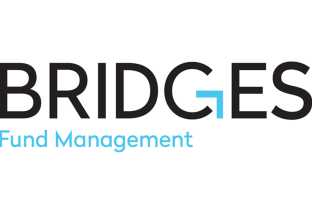HBS Career & Professional Development (CPD) is sharing Working Knowledge articles to further educate our recruiting partners about best practices in human resources.
Employee orientation programs ought to be less about the company and more about the employee, according to new research by Daniel M. Cable, Francesca Gino, and Bradley R. Staats.
The first few minutes of new employee orientation, if done right, can lead to happier and more productive workers and, ultimately, increased customer satisfaction. Unfortunately, a lot of companies do it wrong.
In many firms, employee orientation focuses solely on corporate culture and identity of the new workplace. There's a lecture about the firm's history and another about standard operating procedures. There's a packet of information from human resources, emblazoned with the firm's logo, and maybe a coffee mug to match.
The underlying message: Welcome. You should be proud to work here. Please fit in accordingly.
But research suggests that employee orientation ought to be less about the company and more about the employee. In their paper "Breaking Them In or Eliciting Their Best? Reframing Socialization around Newcomers' Self-expression," published in the March 2013 Administrative Science Quarterly, a research team finds that shifting the focus to an employee's personal identity leads to an increase in both employee retention and customer satisfaction.
"Organizations will talk about recruiting from outside the company because they need new ideas and new blood, but then there is this tendency to shut off the new and basically transfer the corporate culture over to the new employee," says Francesca Gino, an associate professor at Harvard Business School who cowrote the paper with Daniel M. Cable of London Business School and Bradley R. Staats (HBS MBA '02, DBA '09) of the University of North Carolina Kenan-Flagler Business School. "It was interesting for us to think about how part of your identity seems to go away as you go through that process."
“IT WAS INTERESTING FOR US TO THINK ABOUT HOW PART OF YOUR IDENTITY SEEMS TO GO AWAY AS YOU GO THROUGH THE ORIENTATION PROCESS.”
Previous studies have shown that employees are especially productive and happy when employers encourage them to use their individual signature strengths on the job, but historically those studies did not consider the employee onboarding process, Gino says. The researchers hypothesized that companies would see positive performance results by emphasizing employee individuality from day one, testing their hypothesis through a series of field and lab experiments.
For starters, they conducted a field study at Wipro, a major business process outsourcing company based in Bangalore, India, that provides telephone and chat support for its global customers. Traditionally, Wipro's orientation for call center employees consisted of an informational session about the company, followed by several weeks of training in which new call agents must demonstrate proficiency in English, as well as an aptitude for following standard procedures during customer calls.
Individuality was not just discounted; in some ways it was expressly discouraged. "As a service role, the job can be stressful, not only because employees must help frustrated customers with their problems, but because Indian call center employees are often expected to 'de-Indianize' many elements of their behavior—for example, by adopting a Western accent and attitude," the paper explains.
Wipro was dealing with a big dropout dilemma; more than half of its call center employees quit only a few months after training. "Wipro presented us with the problem of figuring out whether there was anything we could do to reduce turnover," Gino says. "We thought it was the perfect environment to test whether we could make a difference just by changing something minor in the onboarding process."
Identity Experiments
In the field experiment, the researchers divided batches of new call agents into an individual identity group, an organizational identity group, and a control group. The control group went through the traditional process, focused on firm awareness and skills training. The two identity groups received the same training as the control group, but also an additional hour-long presentation, which varied according to the group.
In New-Employee Orientation First Minutes are CriticalFor the individual identity condition, a senior leader at Wipro spent 15 minutes discussing ways in which working at the company would enable the newcomers to express their individuality. Next, the new call agents completed an exercise ranking the individual strengths they would exhibit if stranded on a life raft at sea; they also spent time considering how their responses might differ from their colleagues'. Then, the agents answered a series of questions about their individual strengths such as, "What is unique about you that leads to your happiest times and best performance at work?" Finally, the agents shared their strengths with their future officemates.
At the end of the session, employees in the individual identity group received fleece sweatshirts embroidered with their individual names, along with a name badge. They were asked to wear them for the duration of employee training.
For the organizational condition, new employees spent 15 minutes listening to a senior Wipro leader and a "star performer" at the company talk about why Wipro was a singular place to work. Next, the newcomers spent 15 minutes writing answers to questions such as, "What did you hear about Wipro today that you would be proud to tell your family about?" Finally, the group members discussed their answers with each other.
At the end of the session, employees in the organizational identity group received fleece sweatshirts embroidered with the company name, along with a badge. They were asked to wear them for the duration of employee training.
Seven months later, the researchers looked into whether the orientation changes affected how long the newcomers/agents chose to stay with the company. "Considering we just changed one hour on the first day of orientation, the results were amazing," Gino says.
The turnover rate in the control group was 47.2 percent higher than that of the individual identity group, and 16.2 percent higher than that of the organizational identity group. And turnover was 26.7 percent higher in the organizational identity condition than in the individual identity condition. Additionally, employees in the individual identity group had garnered higher customer satisfaction scores during the seven months than those in the control group.
To further study the reasons behind the findings, the researchers conducted a similar experiment in the controlled environment of a university lab. They recruited 175 college students for a three-hour study, conducted over two consecutive days. The students were told at the start that they would be working on a series of tasks, including data entry. All participants completed day one of the study (receiving $35 for their trouble). They were given the choice of whether to return on the second day (in which case they'd receive an additional $15).
As with the field experiment, some participants were placed in a control group, others engaged in activities that stressed individuality (creating personalized nametags, for example), and some focused on the identity of the organization (such as creating a logo for the research lab).
After the experiments, participants filled out a short questionnaire about their experience in the lab, indicating their level of agreement with statements such as, "Within this research team, I felt like a distinctive person." These were meant to measure what the researchers call "authentic self-expression."
Lab participants in the individuality group reported higher levels of authentic self-expression than those in the organizational group. Individuality group participants also performed better and faster on data-entry tasks than those in the other groups. Furthermore, those in the individuality group were much more likely to return to the lab on the second day, indicating that the opportunity for self-expression is indeed directly related to employee retention.
Lessons For Businesses
For employers, the implications of the findings are pretty clear: "Given that the standard, organization-focused approach of employee socialization is so common, it would benefit managers to think about an alternative approach where there's more room for newcomers' self-expression, Gino says. "This is a pivotal stage of the employee/employer relationship, and there are ways to emphasize people's individuality so they can bring it out into their jobs. To Wipro's credit, after seeing the results of the study, the company redesigned its employee orientation process such that personal identity socialization is a part of it."
NOTE TO READERS: In the next step of this research, Professor Gino and her colleagues are looking to discover which aspects of self-reflection during employee orientation are most likely to lead to a happy, effective workforce. For example, will the results differ if employees reflect on their weaknesses as well as their strengths? If you think your company would be interested in participating in a field study on this topic—and possibly improve employee retention and productivity—please write to Francesca Gino directly at fgino@hbs.edu.
This post was orginally published on HBS Working Knowledge.







